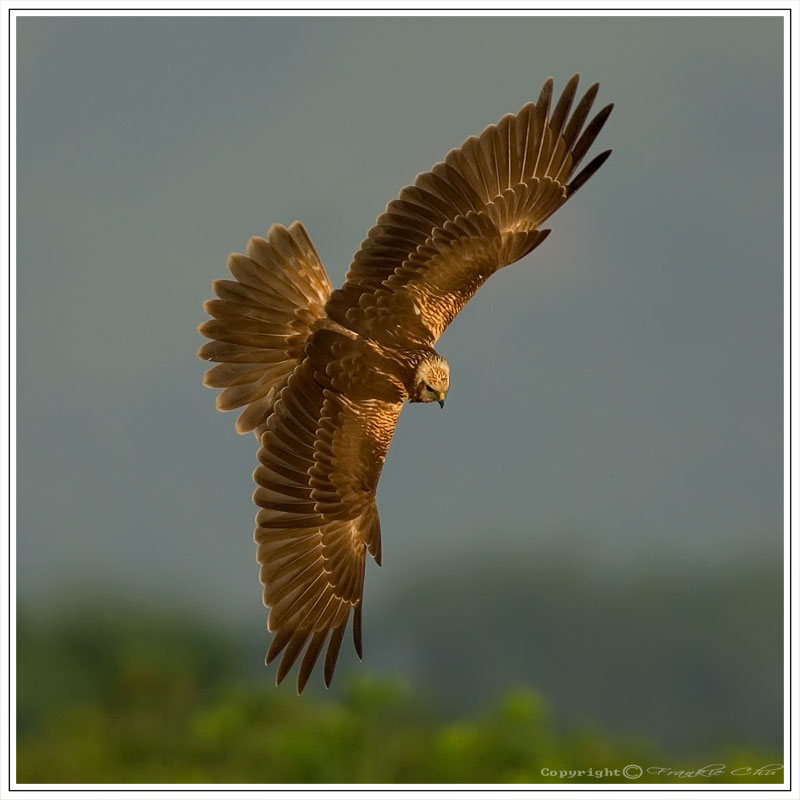Eastern Marsh Harrier (Circus spilonotus) - Wiki Eastern Marsh Harrier
From Wikipedia, the free encyclopedia
Order: Falconiformes
Family: Accipitridae
Subfamily: Circinae
[Photo] Eastern Marsh Harrier (Circus spilonotus). 白頭???(澤???). Nikon D2X AFS ED AF-S 600mm f/4D IF-ED II Teleconverter TC-14E II/14E. Source: Flickr (www.flickr.com/photos/frankie_chu/740959391/). Date: July 7, 2007. Author: Frankie Chu, stfbfc (www.flickr.com/photos/frankie_chu/).
The Eastern Marsh Harrier (Circus spilonotus) is a bird of prey belonging to the marsh harrier group of harriers. It was previously considered to be conspecific with the Western Marsh Harrier (Circus aeruginosus) but is now usually classified as a separate species. It has two subspecies: Circus spilonotus spilonotus in eastern Asia and Circus spilonotus spilothorax (Papuan Harrier, perhaps a separate species) in New Guinea.
Description
It is 48 to 58 cm long with a wingspan of 113 to 137 cm; like most birds of prey, the female is usually larger than the male. The male's plumage is variable; typically the head, breast, back and wing-coverts are blackish with pale streaks. The rest of the wing is grey with black wingtips and a white front edge. The tail is grey, the rump is white and the underparts are mostly white. The female is dark brown with buff streaking on the head and underparts. The rump is often whitish and the tail has dark bars. Young birds are dark brown with buff on the head and a pale patch on the underwing.
It is usually silent but has a mewing call which is most often uttered at roost sites.
Distribution and habitat
Eastern Marsh Harriers are generally migratory apart from the Papuan Harrier which is sedentary. The breeding range covers north-east China, Mongolia and south-east Siberia (as far west as Lake Baikal) with small numbers in northern Japan (Hokkaid?? and northern Honsh??). There is some overlap with Western Marsh Harrier around Lake Baikal and interbreeding has taken place.
The wintering range includes southern China, Taiwan, Korea, southern Japan, north-east India, Bangladesh and South-east Asia as far south as the Philippines, Borneo and Sumatra. Large numbers of birds migrate along the Chinese coast with thousands passing through sites like Beidaihe during the autumn.
Its preferred habitat is open country including marshland, paddyfields and grassland.
Diet and reproduction
While hunting it flies low over the ground with the wings held in a shallow V-shape. Its prey includes small mammals, birds and frogs.
The breeding season begins in April. The nest is made of sticks and built on the ground, usually in a reedbed. Four to seven eggs are laid which are incubated for 33 to 48 days. The young birds fledge after 35 to 40 days.
http://en.wikipedia.org/wiki/Eastern_Marsh_Harrier
| The text in this page is based on the copyrighted Wikipedia article shown in above URL. It is used under the GNU Free Documentation License. You may redistribute it, verbatim or modified, providing that you comply with the terms of the GFDL. |
